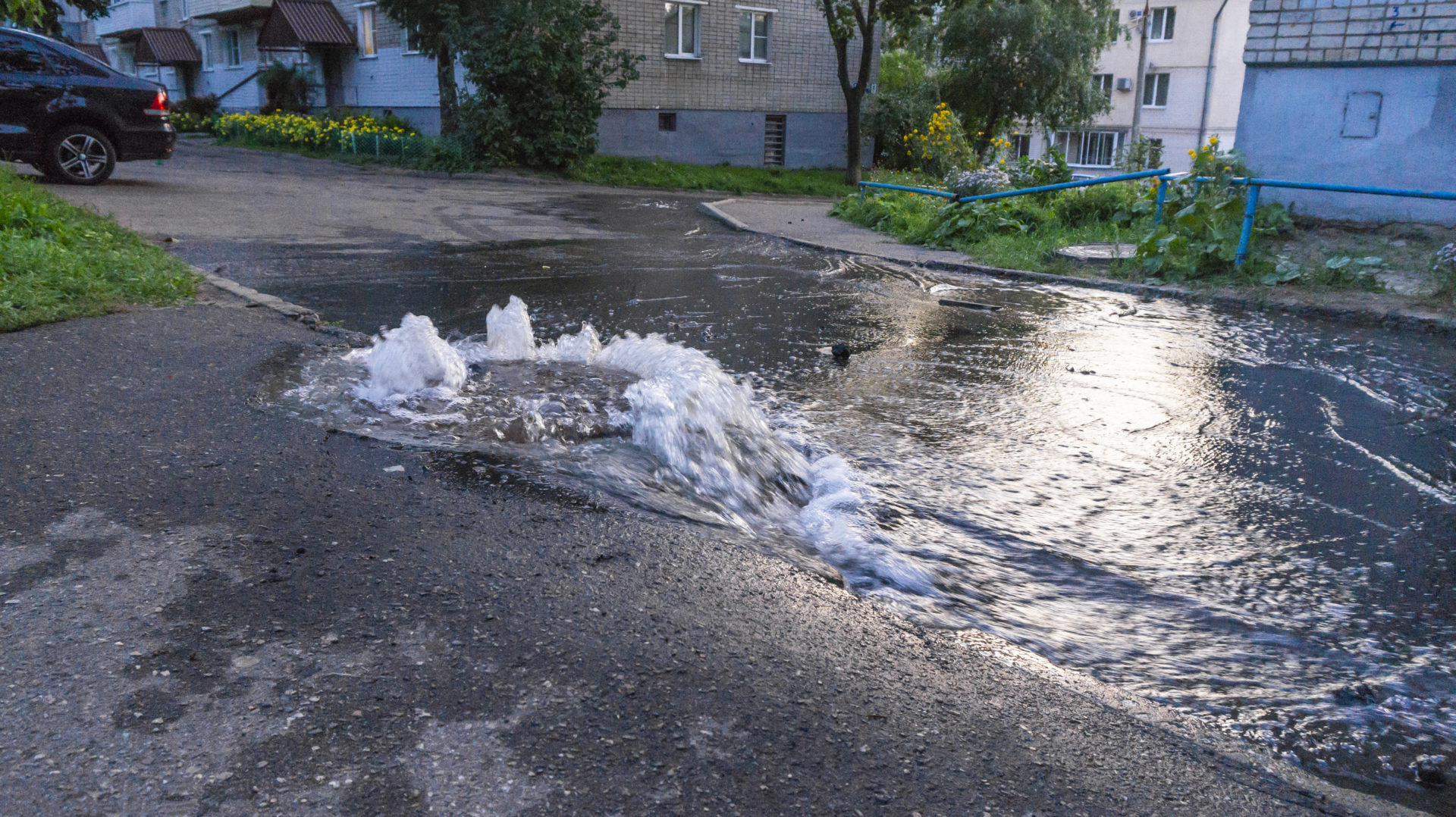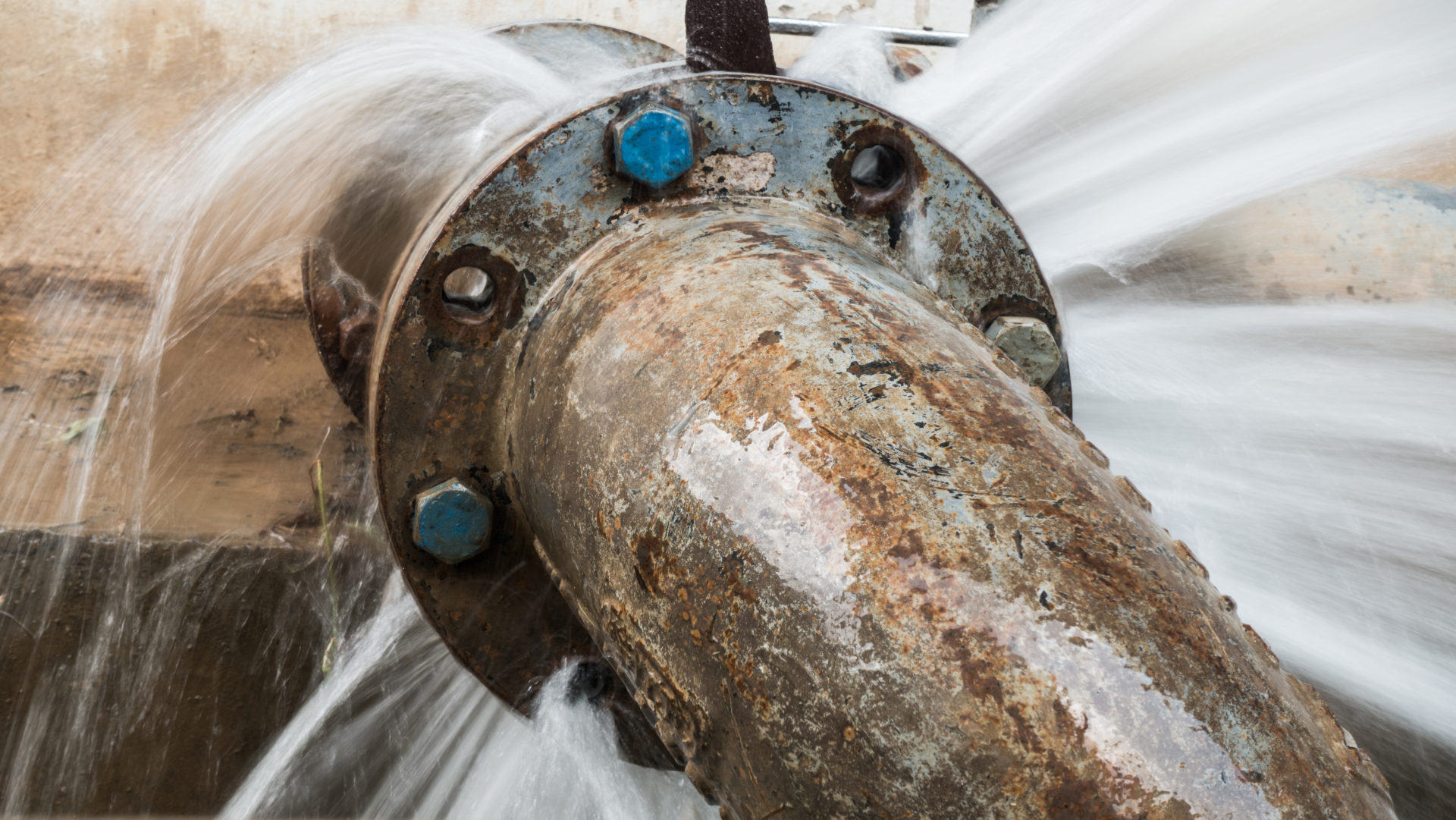Preventing Rain Water & Sanitary Overflow (SSO)
Sanitary System Overflow, otherwise known as SSO, is a condition where untreated sewage is backed up and expelled from a sanitary sewer into the environment. When there’s rainfall, it’s commonly known as wet weather overflow. This is a massive problem when it occurs as it poses health, safety, and environmental concerns.
Keep reading to learn about what causes sanitary system overflow, problems that arise when it rains, and what can be done to prevent it.

What Causes Sanitary System Overflow?
Sanitary systems, which collect and move wastewater (from homes, commercial buildings, and industrial facilities), can overflow for a number of reasons. This issue is frighteningly common. The EPA estimates that there are at least 23,000 – 75,000 SSOs per year (not including sewage backups into buildings) in the U.S.
SSOs can be caused by issues with the sewer lines themselves. Line breaks and blockages are often the culprits.
These breaks and blockages can be made worse by sewer defects that allow storm water and groundwater to overload the system, power failures, improper sewer design, and vandalism.
Heavy rains can be “the straw that breaks the camel’s back” in these situations, as well. An abundance of rain can overload sewer systems quickly, making any existing problems much more likely to catastrophize into an SSO.
Common Problems When It Rains
Rain causes SSOs in municipalities that have combined sewer systems.
Combined sewer systems, according to the EPA, are “sewers that are designed to collect rainwater runoff, domestic sewage, and industrial wastewater in the same pipe. Most of the time, combined sewer systems transport all of their wastewater to a sewage treatment plant, where it is treated and then discharged to a water body.”
These systems run into issues when the combined intake exceeds the system’s capacity to handle it.
1. System Overload
During extreme weather events, excessive storm water enters the sewer system. This alone can cause an SSO, though combined sewer systems are usually designed to expel them in designated locations.
If the rainwater becomes too much for the system to handle, these systems often expel the excess water into nearby streams, rivers, or other water bodies. Though the SSO is deliberately placed there, it doesn’t mean it’s not harmful. These SSOs still contain human waste, toxic chemicals, untreated wastewater, and other things that don’t belong in our watersheds. However, these municipalities make sure if they do happen, they happen away from densely populated areas.
Beyond excessive rain, these systems can be overloaded by snowmelt as well.
2. Lines Bursting & Cracking From A Blockage
If there’s an existing blockage in a sanitary sewer system (especially a combined sewer system) that has yet to be fixed, excessive rain can cause a catastrophe. The pressure from the blockage, amplified by the sudden influx of water, can cause sewer lines to crack and even burst.
Unlike the SSOs that are planned to expel into streams and rivers away from population centers, blockages can cause urban harm. A blockage near a city could backup human waste and other unwanted liquids into streets and surrounding infrastructure, which no one wants.
These blockages can be caused by a variety of things, which will be discussed next.
3. Debris Clogging & Blocking Drains Leading To A Backup
The causes of domestic pipe blockages and sanitary sewer system blockages can be frustratingly similar. In both cases, built-up materials that never belonged in the pipes in the first place are usually the catalyst for the problem.
For example, in a city in England, a 330-ton “fatberg” (a blockage made up of household materials) clogged up the sewer system for weeks. This obstruction was made up of wet wipes, diapers, sanitary products, and other things that shouldn’t have been flushed down the toilet.
These obstructions can easily cause SSOs, especially during times of heavy rainfall. The sudden increase in water has nowhere to go due to the clog, meaning the water backs up and sewage flows in the direction it shouldn’t—back towards where it came from.

How Do You Prevent SSOs?
One of the most important things that help prevent SSOs is the underground water infrastructure itself. Obviously, things like obstructions from residential behavior can’t be totally prevented, but having a healthy water infrastructure helps to mitigate the chance of issues occurring or getting worse.
Healthy underground water infrastructure is less likely to crack, leak, or burst during periods of intense rainfall or snowmelt. This is why it’s so important for municipalities to stay on top of repair and rehabilitation.
One of the best ways to ensure that underground water infrastructure stays healthy is through R&R with polymeric linings like Sprayroq™’s SprayWall® product, which not only protects against corrosion damage but actually strengthens the structure itself.
SprayWall® is designed to last over 50 years, meaning that the civil engineers who work on the R&R project will likely be retired by the time further repairs are needed.
SprayWall® is applied by Sprayroq™ Certified Partners, industry-leading professionals who have the ability to carry out impossible-seeming underground repairs.
Luckily, these R&R projects to help prevent SSOs using SprayWall® don’t have to take long, and they don’t involve ripping up roads and causing traffic disruptions. SprayWall® is a trenchless solution, meaning that the applicators go underground and spray the product directly into the structure that needs fixing.
Further, SprayWall®’s 30-45-minute return to service time allows for accelerated project completion, which both civil leaders and residents alike can appreciate.
Have questions about SprayWall® or want to learn more about applying to become a Sprayroq™ Certified Partner?
Contact us, and let’s work together to keep underground infrastructure protected for decades to come.

